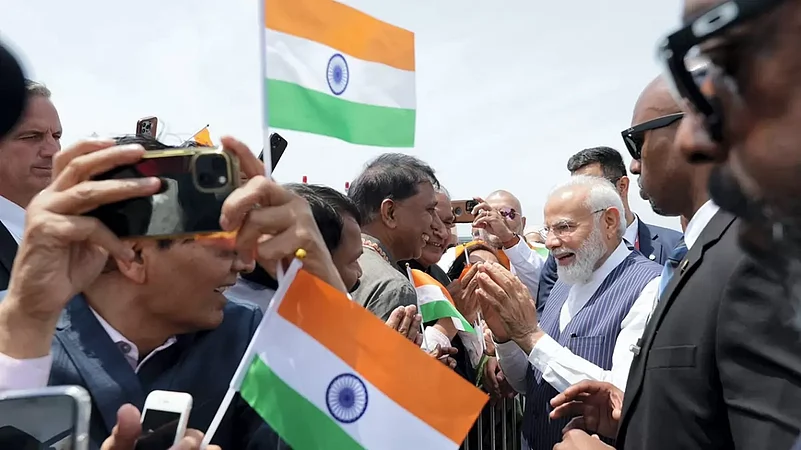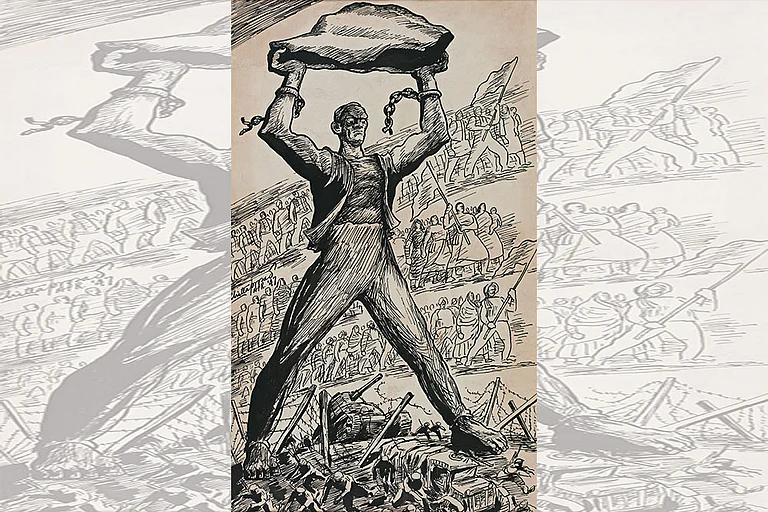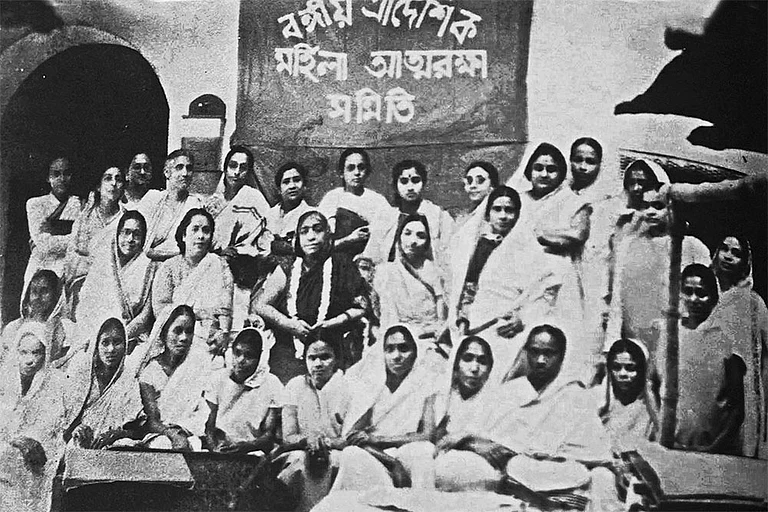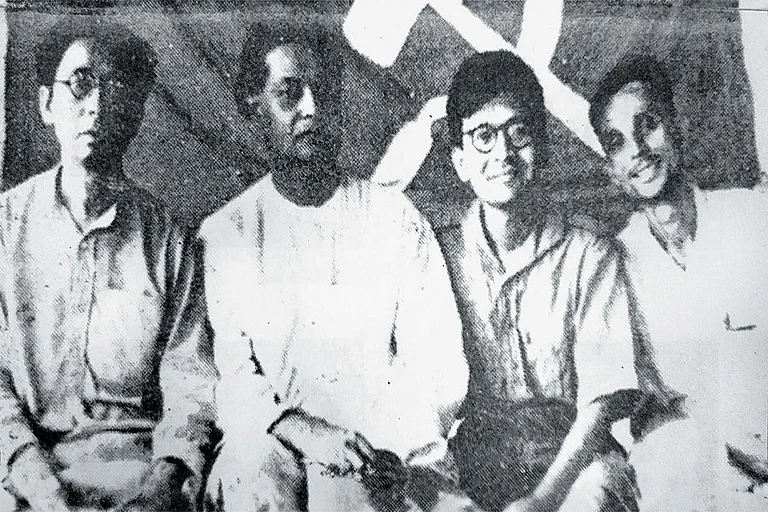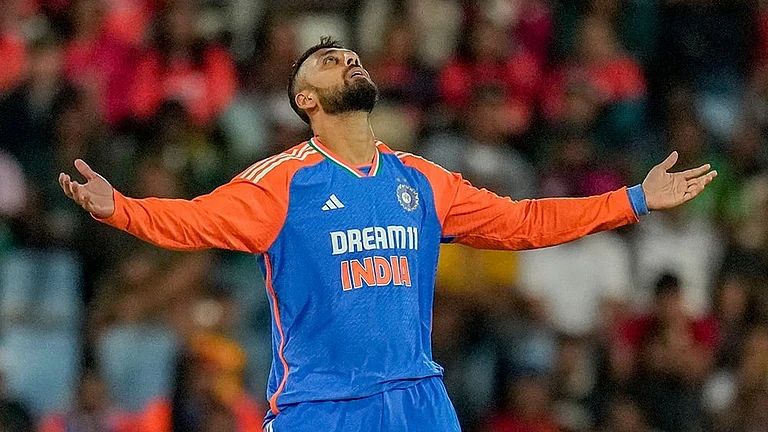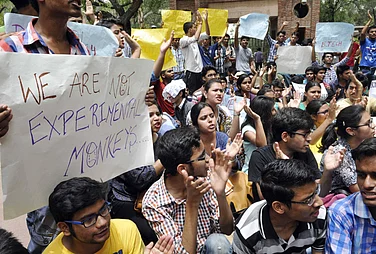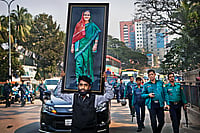Prime Minister Narendra Modi’s first state visit to the US is being touted as a game changer in India-US ties by some -- the noise around the trip is deafening and expectations raised sky high. More so, because the Biden administration expects a "transformational moment" in its ties with India during the visit. US National Security Adviser Jake Sullivan, who was in New Delhi recently said so. Are the expectations too high? Is the visit being over-hyped? Did Sullivan get such an indication during his visit or is this the general wooing of India by Biden administration officials?
Not that this is the first time that an Indian PM is going to Washington on a state visit. Modi himself has been to the White House before. Six visits in all including bilateral and multilateral meets. Other Indian PMs have also had state visits including Manmohan Singh. The official business is the same in every meeting between heads of government; the state visit merely throws in some pomp and glitter.
But the larger question is whether Washington will be able to persuade India to place both feet firmly on the side of the US and its Western allies. New Delhi has so far been treading the line between traditional ally Russia and the US rather successfully, but Washington is keen now for India to take the final step. Is India ready for that?
President Joe Biden’s invite to Modi is in keeping with the growing all-round ties between the two countries, which took a decisive turn in 2005 with the signing of the civil nuclear agreement between former president George Bush and then prime minister Manmohan Singh. The neo-cons in the Bush administration wanted India as a counter to a rising China in Asia. Relations between Beijing and Washington were not frayed as they are now. Yet many within the conservative establishment realised that US interests would be better served by having India, the other major Asian power on its side.
Successive US leaders, from Democrats Bill Clinton and Barak Obama to Republican Donald Trump have reached out to India on concerns over China’s phenomenal rise and a future threat to US supremacy. Since Trump, and now with Biden, the threat of China, the world’s second most powerful country looms large in Washington. US now regards China and not Russia’s Vladimir Putin as its main strategic threat in the future. India is on the same page as the US when it comes to China. Since the military confrontation in 2020, relations between the two Asian powers have hit rock bottom. India knows that it will take a couple of decades to catch up with China’s military might, and is looking to stitch up alliances with like-minded countries. The Quad is part of that initiative.
India and US interests are strategically allied in containing China’s assertive moves in Asia. Since the Russian invasion of Ukraine, which the US frames as an authoritarian leader’s assault on a democratic country, Washington wants New Delhi to come over to the side of democracy and the Western alliance, much like the Europeans have done. India is in no mood to cut off its old links with Russia, though since the end of the Cold War and the break-up of the former Soviet Union, New Delhi has moved much closer to the US and the West. It is also gradually diversifying its defence purchases and is no longer solely dependent on Russia. India is finalizing a massive $30 billion deal for the purchase of 31 Predator drones from the US, that are remotely controlled with long endurance capabilities and fly very high. The agreement has not been signed and could be done during the PM's visit or soon afterwards. But the negotiations and nitty-gritty are out of the way. The Navy will get 15, and the Army and Air Force eight each. The Navy has been using two unarmed 9B SeaGuardian drones on lease from General Atomics since 2020 for surveillance in the Indian Ocean. The drones that will be now provided will also be armed, through the entire process will take a few years. Foreign Secretary Vinay Kwatra, said at a news briefing on the Prime Minister’s visit that "bilateral defence cooperation has been a critical pillar of our engagement. And within that, a new element has been added this year… we expect progress on defence industrial cooperation…..not just in the field of co-production and co-development, but also do it in a manner that supply chains on both sides are robust."
India is today one of the largest buyers of arms in the world as it tries to modernise its defence capabilities. The US and other Western nations hope to break New Delhi’s dependence on Russian equipment. But displacement of Russian equipment will not be easy. And those who say that Russia provides outdated technology are often off the mark. "The Russians sell us new technologies like SU 30MKI, BrahMos, T90 tanks and Stealth frigates all of which are 21st century products," says Asoke Mukerji, India’s former Ambassador to the UN.
India while seeing the advantages of an alliance with the US, is circumspect and does not want to place all its eggs in one basket. New Delhi also knows that a country and a market of India’s size cannot be easily ignored.
What does India want from the US?
Being friends with the world’s only superpower has many advantages and New Delhi has already benefited from the civil nuclear deal that helped to shred its nuclear pariah status and opened the doors to three multilateral export control regimes, like the Missile Technology Control Regime, the Wassenaar Arrangement and the Australia Group.
India is keen to get the art technology from the US, something that has long been denied. Transfer of technology to India was not on the plate in the past. There is talk of joint production and buzz about General Electric co to build jet engines for India’s military aircraft. The deal has not been finalised but there is much excitement about this with little details emerging as of now. Old timers recall India’s attempts in 1985 to get a Cray Supercomputer from the US in the past. There was a political agreement between Ronald Reagan and Rajiv Gandhi during a similar state visit. However, the bureaucracy proposed an older model and the deal fell through leaving a bitter taste for decades to come.
Much will depend on what finally happens during the meeting between Modi and Biden. As ambassador KC Singh says, "Let’s wait for the end of the visit to see what actually happens. Much will depend on what is finally discussed and arrived at." He also points out that Secretary Blinken’s visit to China just before Modi’s visit should be also kept in mind.
Prime Minister Modi will meet heads of major American companies while in the US. Bilateral trade between India and the US is almost touching $200 billion, according to the foreign secretary. Investment flows have been good and the two sides are pushing for more.
While the Biden administration is handling India with kid gloves, and turning a deaf ear to accusations of sliding democratic and liberal values in India under Modi, many in the US Congress, including the progressives in the Democratic Party have called out India on issues of religious freedom and human rights. There could be several protests and demos, and criticism of the administration's complete turnaround on the value-based diplomacy that Biden spoke of while taking office. For the Biden administration, concerns on China and Ukraine have made human rights low priority for the US at the moment, when it comes to India.
"The US administration is going quite the distance to get India on their side. Defence equipment, secure supply chains as well as technology transfer are all being laid out…Biden critics have accused him of ignoring the ground reality… The White House wants India to be firmly in its camp against Russia," says analyst and historian Srinath Raghavan. "The US is well aware that India is unlikely to flip sides immediately, but over a period of time there is hope that India may dilute its stand on Russia," he adds.







